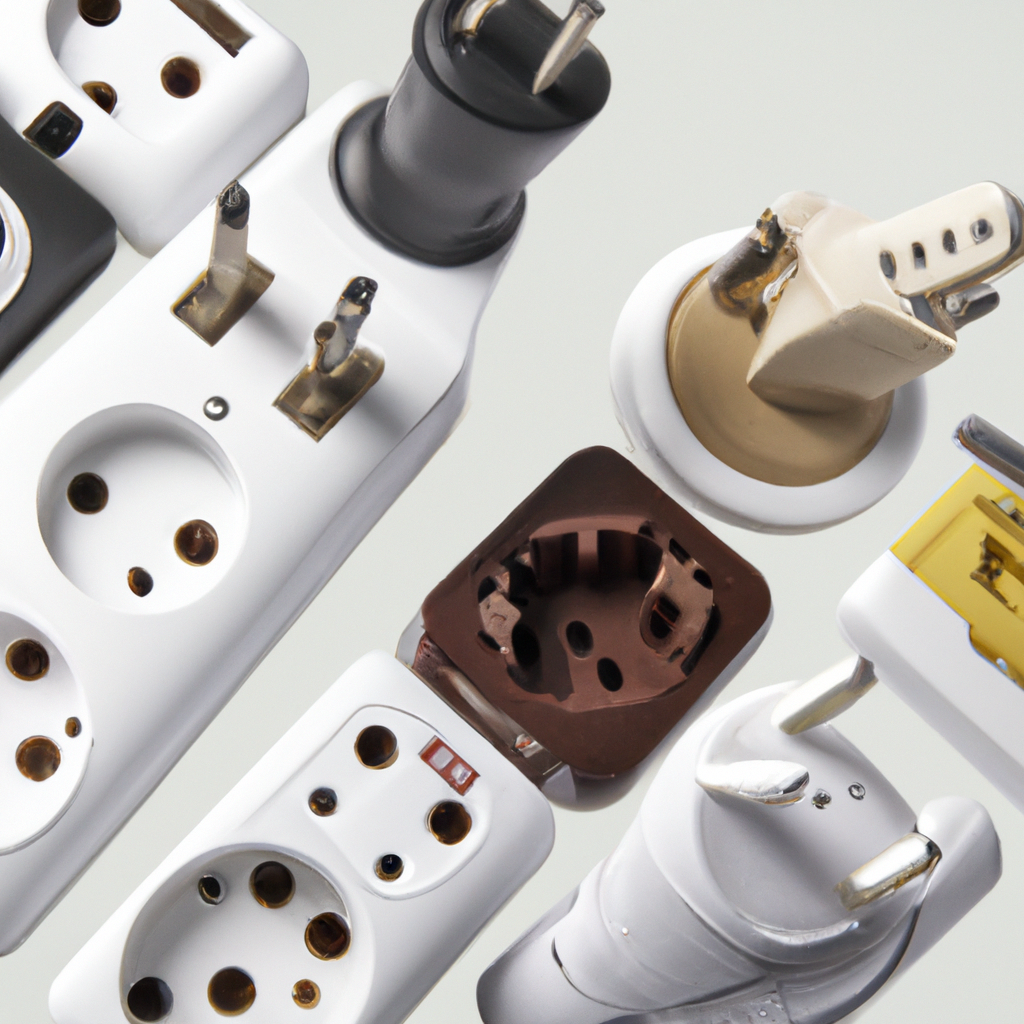You’re about to embark on an exciting journey as we explore the fascinating world of electrical systems. In this article, we’ll delve into the five different types of electrical systems, each with its unique characteristics and applications. From power distribution to lighting and everything in between, you’ll gain a deeper understanding of how these systems function and their significance in our everyday lives. So, fasten your seatbelt and get ready to embark on an electrifying adventure!

Types of Electrical Systems
When it comes to electrical systems, there are various types that can be found in different applications. Each type has its own unique characteristics and uses, serving specific purposes in various industries and sectors. In this article, we will explore the different types of electrical systems, including single-phase systems, split-phase systems, three-phase systems, direct current (DC) systems, alternating current (AC) systems, low voltage systems, high voltage systems, single wire systems, two-wire systems, and three-wire systems.
Single-Phase Systems
Definition and Characteristics
single-phase systems are one of the most widely used types of electrical systems in residential and small commercial settings. They consist of a single alternating current (AC) waveform, typically with a voltage of 120 or 240 volts. In a single-phase system, power is delivered in a single direction, resulting in a simple and straightforward electrical setup.
Single-Phase AC Power Generation
Single-phase AC power generation involves the use of a single-phase generator or alternator. The generator produces a single waveform, which is then distributed to various electrical loads. This type of power generation is suitable for smaller-scale applications where the power demand is relatively low.
Applications of Single-Phase Systems
Single-phase systems find applications in a wide range of electrical devices and equipment, including household appliances, lighting fixtures, small motors, and electronics. They are commonly used in residential buildings, small businesses, and offices.
Split-Phase Systems
Definition and Characteristics
Split-phase systems are a variation of single-phase systems that include an additional phase, resulting in expanded power capacity. Unlike single-phase systems, split-phase systems have two out-of-phase AC power waveforms. The two phases are produced by splitting a single-phase source into two separate windings, allowing for increased power distribution capabilities.
Split-Phase AC Power Generation
Split-phase AC power generation involves the use of a transformer with a center-tapped secondary winding. This configuration creates a mid-point where the voltage is split into two equal parts, resulting in two out-of-phase waveforms.
Applications of Split-Phase Systems
Split-phase systems are commonly used in residential buildings and small commercial establishments. They are ideal for powering larger loads, such as air conditioning units, electric water heaters, and larger motors. The additional phase provides increased power capacity and improved efficiency compared to single-phase systems.
Three-Phase Systems
Definition and Characteristics
Three-phase systems are widely used in commercial, industrial, and utility settings due to their high power capacity and efficiency. Unlike single-phase and split-phase systems, three-phase systems consist of three AC power waveforms, spaced 120 degrees apart. These systems can deliver a more uniform and constant flow of power compared to single-phase systems.
Three-Phase AC Power Generation
Three-phase AC power generation involves the use of a three-phase generator or alternator. The generator produces the three-phase AC power waveforms, which are then distributed to various electrical loads. This type of power generation is well-suited for applications with high power demand.
Advantages of Three-Phase Systems
Three-phase systems offer several advantages over other types of electrical systems. They have higher power capacity, more efficient power transmission, and provide a balanced load. Additionally, three-phase motors are commonly used in industrial equipment due to their smoother operation and higher torque.
Applications of Three-Phase Systems
Three-phase systems are extensively used in industrial settings, including manufacturing plants, factories, and large-scale operations. They power heavy machinery, industrial motors, pumps, compressors, and other equipment that require high power consumption.

Direct Current (DC) Systems
Definition and Characteristics
Direct current (DC) systems involve the flow of current in a single direction without changing polarity. Unlike AC systems, which alternate the direction of the current, DC systems provide a constant and steady flow of power. DC systems operate at a specific voltage level, which can vary depending on the application.
DC Power Generation
DC power can be generated through various means, such as batteries, solar panels, fuel cells, and rectifiers. These sources convert other forms of energy, such as chemical or solar energy, into electrical energy. DC power generation is commonly used in portable devices, renewable energy systems, and telecommunications.
Advantages of DC Systems
DC systems offer certain advantages over AC systems in specific applications. They provide a more stable and reliable power supply, especially for sensitive electronics and control systems. DC systems are also more efficient in converting and storing energy from renewable sources, making them ideal for off-grid and sustainable power solutions.
Applications of DC Systems
DC systems find applications in a variety of devices and systems, including battery-powered vehicles, mobile phones, personal computers, and electronic devices. They are also used in renewable energy systems, electric vehicles, and data centers.
Alternating Current (AC) Systems
Definition and Characteristics
Alternating current (AC) systems are the most common and widely used type of electrical systems worldwide. AC systems involve the flow of current that periodically changes direction, creating an alternating waveform. AC systems have become the standard for power transmission and distribution due to their efficiency and ease of use.
AC Power Generation
AC power is generated through various means, including thermal power plants, hydroelectric power plants, and nuclear power plants. The generators used in these facilities produce AC power waveforms, which are then transmitted through power lines for distribution.
Advantages of AC Systems
AC systems offer several advantages over DC systems in terms of power transmission and distribution. AC systems can be easily transformed to higher or lower voltage levels using transformers, allowing for efficient long-distance power transmission. AC systems also enable the use of different electrical devices and equipment due to their compatibility with standard power outlets.
Applications of AC Systems
AC systems are used in nearly all aspects of our lives, including residential, commercial, and industrial applications. They power lighting systems, motors, appliances, heating and cooling systems, and electronic devices. AC power is also used in public utilities for grid-based power distribution.

Low Voltage Systems
Definition and Characteristics
Low voltage systems refer to electrical systems that operate at relatively low voltages, typically below 1000 volts. These systems are designed to provide power to devices and equipment that do not require high voltage levels. Low voltage systems are generally safer to handle and pose less risk of electrical hazards.
Importance of Low Voltage Systems
Low voltage systems are crucial for various applications, especially in residential and commercial settings. They ensure the safe operation of lighting fixtures, small appliances, communication systems, and low-power electronic devices. Additionally, low voltage systems serve as a stepping stone for converting higher voltage levels to safer and more manageable levels.
Applications of Low Voltage Systems
Low voltage systems are employed in a wide range of applications, including residential lighting, doorbells, intercom systems, security cameras, and telecommunication networks. They are also used in data centers, audiovisual systems, and small-scale industrial processes.
High Voltage Systems
Definition and Characteristics
High voltage systems refer to electrical systems that operate at voltages significantly higher than the normal residential or commercial levels. These systems are used for long-distance power transmission, where higher voltage levels are necessary to minimize power losses during transmission.
Importance of High Voltage Systems
High voltage systems play a critical role in the transmission and distribution of electricity over long distances. By increasing the voltage levels, power losses due to resistance in the transmission lines can be reduced. This allows for more efficient power delivery from power plants to end-users.
Applications of High Voltage Systems
High voltage systems are primarily used in electrical power grids, including overhead transmission lines and substations. They are also employed in large-scale industrial operations, such as steel mills, chemical plants, and mining facilities, where high power demand is present.

Single Wire Systems
Definition and Characteristics
single wire systems, also known as single-wire earth return (SWER) systems, are a type of electrical distribution system that uses a single wire for both the supply and return path. This unique setup allows for cost-effective power distribution in remote areas where installing multiple wires is not feasible.
Advantages and Limitations of Single Wire Systems
Single wire systems offer significant cost advantages compared to traditional two or three-wire systems. They require fewer materials and are easier to install, making them suitable for rural electrification projects. However, single wire systems have limitations in terms of power capacity and require special considerations for maintaining proper grounding and safety.
Applications of Single Wire Systems
Single wire systems are commonly utilized in rural and remote areas where extending traditional power grids would be prohibitively expensive. They are often used for essential power needs, including lighting, small-scale appliances, and basic electrical equipment.
Three-Wire Systems
Definition and Characteristics
Three-wire systems, also known as three-phase three-wire systems, are a type of electrical distribution system that consists of three conductors and a neutral wire. These systems are widely used for power distribution in both residential and commercial settings, providing higher power capacity and improved load balancing compared to single-phase systems.
Advantages and Limitations of Three-Wire Systems
Three-wire systems offer several advantages over single-phase systems, including a higher power capacity, better load balancing, and improved efficiency. With three phases, the power demand can be evenly distributed across the conductors, resulting in a more stable electrical supply. However, three-wire systems require additional wiring and specialized equipment, which can increase installation and maintenance costs.
Applications of Three-Wire Systems
Three-wire systems are extensively used in residential buildings, commercial establishments, and industrial facilities. They power a wide range of equipment and appliances, including air conditioners, refrigeration systems, electric motors, and heavy machinery.
In conclusion, understanding the different types of electrical systems is crucial in determining the appropriate setup for specific applications. Whether it’s a single-phase system for residential use, a three-phase system for industrial operations, or a DC system for renewable energy, each type offers unique advantages and characteristics. By considering factors such as power capacity, efficiency, and safety, the proper electrical system can be selected to meet the needs of various industries and sectors.




